Rev. James White
1847-1866
Prior to the Disruption of 1843, Mr. White had been pastor to a congregation in Hull. On a number of occasions Mr. White took the services at Stevenston, on a pulpit-supply basis, and liking him greatly the congregation sought opinions of him from other sources. After receiving good reports, and having personal experience of the gentleman, the congregation decided to present him with a unanimous call to the charge at Stevenston. The Free Church in Stevenston prospered under the leadership of Mr. White, and the people of the town were inspired by his labours to a new sense of spiritual freedom.
After 19 years service, failing health compelled Mr. White to petition the Presbytery and General Assembly for a grant to enable him to have the use of an assistant. The Assembly, in its wisdom, refused the petition on the grounds that the Stevenston charge did not merit such assistance. Nevertheless, because of Mr. White’s poor health, the Assembly made a grant available to allow him to retire from his duties. Thus ended the ministry of the first incumbent of the Free Church pulpit in Stevenston. His name, however, is still remembered by present members through the James White Bequest Fund; his bequest to us for the charitable use of our minister.
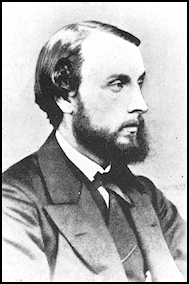
Rev. James Treadwell, M.A.
Rev. James Treadwell, M.A.
1867-1876
On 28th February 1867, James Treadwell of Almoral Harrow, Australia, was ordained to the Holy Ministry and inducted to the pastoral charge of the Stevenston congregation by the Moderator of the Presbytery, the Rev. R. McIndoe of Galston. After the service of induction, a dinner to welcome the new minister was held in the Masons Arms Inn, where the health and happiness of the Rev. Treadwell was toasted – surely an enlightened event for that period! The following Sunday, the minister was introduced to the congregation at the forenoon service by the Rev. William Buchan, with Mr. Treadwell preaching at the afternoon service. The day was completed with a further service in the evening and it is interesting to note the collection the collection for that day’s services amounted to almost £104; a substantial amount at that time and would be the equivalent of over £10,000 in 2015!
After ministering to a thriving congregation for nine years, James Treadwell was appointed by the Colonial Committee of the Free Church to a charge in New Zealand and thus resigned his charge in Stevenston. He left the town with a high reputation both as a minister and a scholar.
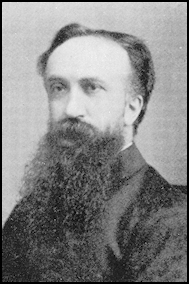
Rev. Joseph Forrest, M.A.
Rev. Joseph Forrest, M.A.
1876-1885
A unanimous call was sent from the congregation to a young probationer from Aberdeen, Joseph Forrest. Mr. Forrest accepted that call and was ordained and inducted in the presence of a large congregation by the Rev. Alexander Davidson of Kilbirnie, and charges of exhortation and encouragement were addressed to the new minister and the congregation by the Rev. Dr. Easton of Darvel. Joseph Forrest was an evangelical preacher, a good pastor, and though stern in appearance was gentle in nature. Because of his involvement with the entire community as well as his own congregation, he was often referred to as “the Parish Minister” – a considerable compliment to a minister of the Free Church!
His nine years of ministry saw a further strengthening and consolidation of the congregation. During it, he formed a strong Band of Hope which became an integral part of the congregation’s life. In 1885, Mr. Forrest became the second minister a call to an oversees charge – although this time only to St. Andrew’s Presbyterian Church, Douglas, Isle of Man!
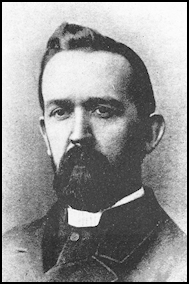
Rev. John Livingstone
Rev. John Livingstone
1885-1900
In the autumn of 1885, there was ordained and inducted to the charge of the Free Church in Stevenston, the young man whose name was subsequently to be given to our congregation. (Now, you did not think too that it was David Livingstone?) A native of Johnstone, he studied at Glasgow University and New College, Edinburgh, and in the spring of 1885 was appointed assistant to the minister of the McCheyne Memorial Church in Dundee. His reputation as a preacher and pastor soon spread, and various congregations competed for his services. Fortunately for the people of Stevenston, Livingstone elected to accept their call. Shortly after settling in Stevenston, the new minister was married to Miss Garrow of Aberlour, whom he had met amidst stirring revival scenes on Speyside. The new Mrs. Livingstone was a committed Christian and was able to assist her husband fully in all his work.
Livingstone inherited a growing congregation, with a Church building that no longer met its needs. Following up the able work of his predecessor, Livingstone fully supported by the people of the congregation, soon brought to fruition the vision of a new Church. Livingstone’s youth and vigour were applied throughout the entire community, and his evangelical fervour ensured that the word of Christ was heard throughout the town. The congregation, in particular, prospered and grew under his leadership. Every seat in the Church was let, and indeed the Church became self-supporting financially and also aid-giving. Such were the demands that Livingstone placed upon himself that he required a period of rest from full duty, and various missionary assistants were seconded to the Church. In 1900, he received a call from the Gallowgate Free Church in Aberdeen, and after long and careful consideration, decided to accept that call, feeling that a change would be beneficial both to his congregation in Stevenston and to his own health. Livingstone’s fifteen years in Stevenston were a watershed in the history of the congregation, and the significance of his work in the community cannot be overstated. It is very understandable, therefore, that in 1929 the congregation decided that their Church should be named “Livingstone Church” – testimony to a man who had given so much of himself to the preaching of the Word, and to the erection of their Church building.
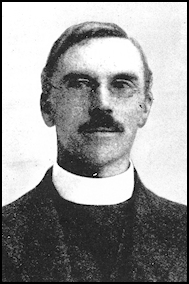
Rev. Matthew Miller
Rev. Matthew Miller
1901-1922
Born and brought up in Larkhall, Lanarkshire, Matthew Miller came to Stevenston originally as a probationer, and was inducted as the first minister of what was now the Stevenston United Free Church (following on the Union in 1900 between the United Presbyterian Church and the Free Church of Scotland). Mr. Miller maintained the tradition of evangelical preaching in Stevenston and the Church continued to flourish although he had to face the difficulty of losing about forty members of the congregation, who had seceded during the Free Church crisis.
It was during his ministry that our present Large Hall was built in 1912. During the Great War, 1914-1918, Mr. Miller served in the Forces through the Y.M.C.A. in England and in 1921 after serious health problems, decided to accept a call to warmer climes and moved to a Presbyterian Church in Auckland, New Zealand.
Rev. George W. Taylor, M.A.
1922-1933
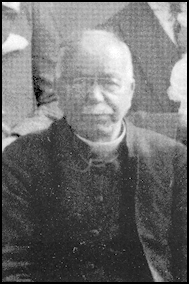
Rev. George W. Taylor, M.A.
Unusually for this congregation, the minister appointed in 1922 was a man of considerable experience, having served as an assistant in Galashiels, minister at Carlops and Clydebank and for the ten years prior to arriving in Stevenston, minister of the South Leith United Free Church. Mr. Taylor was again a preacher of the evangelical message, which seems to have been a prerequisite for our pulpit. He was also a man who took a great interest in the affairs of his time, presenting, with great eloquence and clarity, arguments in the General Assembly and the Courts of the Church as well as contributing articles of interest to the Press.
During his ministry in Stevenston, the great Scottish Church Union took place in 1929, bringing our congregation into the Church of Scotland. George Taylor’s contribution to Livingstone Church may not seem quite so spectacular as some before him, but it was important that our congregation received the experience and maturity of such a man during a time of consolidation and restructuring both for the congregation itself and the Church at large in Scotland.
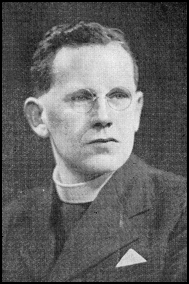
Rev. A. Roy Stark
Rev. A. Roy Stark
1933-1945
Like the first minister of the congregation, Roy Stark had a connection with the city of Hull where he studied chemistry and subsequently became a chemist in a large North of England works. He later turned his attention to the ministry in the Presbyterian Church of England. After completing his education in Cambridge, he received a call to his first charge in Northumberland. Being so close to the Border, it was almost inevitable that he should receive a call from Scotland, and he moved to the United Free Church in Eyemouth. Mr. Stark then received a call from our congregation, and was inducted to the charge of Livingstone Church in October, 1933.
Mr. Stark had to minister in difficult times. Those were still times of economic depression, only ended by the further crisis of World War II. That in turn brought difficulties with premises commandeered and used for the support of the military, men and women of the congregation on active service, and problems of blackout, air-raids and rations. Yet it was in the midst of war that out Church was enhanced by our present organ. Clearly Mr. Stark and the congregation maintained their vision as well as their witness in very difficult times. It was also in 1937, during his ministry, that the Jubilee of our building was celebrated and the previous history of our congregation published. In 1946 Mr. Stark was called to Almondbank in Perthshire, subsequently ministering in a country charge near Haddington. His funeral was attended in Whittinghame Kirk by our former minister, Mr. Roy, and several of our then office-bearers.
Rev. J. Mackay Nimmo, M.A.
1946-1953
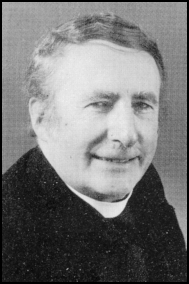
Rev. J. Mackay Nimmo, M.A.
In those days the Manse was often more like a railway station than a house. Always there were people young and old, going in and coming out, sometimes in joy, sometimes in sadness – always in friendship. The liveliness and growth that are the true signs of corporate life were everywhere in evidence in the agencies and organisations of the congregation. The Boys’ Brigade, the Life Boys, the Youth Club, the Carollers, the Dance Club, the Drama Club, the Discussion Group, the Men’s Club – were all new, and attracted considerable numbers of people. Mrs. Jean Nimmo, the minister’s wife, had 80 boys in the Life Boy Group. The Woman’s Guild was a vibrant body that seemed to radiate warmth, vitality and interest throughout the whole Church. Their music and drama too, made their witness effective and memorable.
The Church services were well attended, and indeed, when there were joint services with the High Kirk and Ardeer Church, the Churches were literally packed to the door. However, it must be acknowledged that the Mr. Nimmo was of the ilk that saw the Gospel not as the simple Gospel, but as a social Gospel, that thinks, speaks and acts in the belief that the Church should be politically involved at a national and a local level. He was a devotee of the higher criticism, and much of what he had to preach was of a disturbing – not to say – explosive nature.
During his ministry, Mr. Nimmo served as a County Councillor, a District Councillor and a local Councillor. He was Secretary of the Burgh Status Committee, and when Stevenston achieved the status of a Burgh, he was the first Housing Convenor of the new Burgh. The process of pouring new wine into old bottles is notoriously difficult, and it would be idle to deny – if a mixed metaphor may be allowed – that he stepped on a few corns. Indeed, even after 35 years, the shock waves had gone but were not forgotten!
Be that as it may, Mr. Nimmo remembered the kindness and tolerance, the generosity and humanity of the Stevenston folk. His Session Clerk, James Morrison, once said to him, “Ministers are like bakers, they are born, not made”. On another occasion, he told Mr. Nimmo that he had said to the Vacancy Committee, that, since Mr. Nimmo had been Assistant in Glasgow Cathedral, he would be adequate, surely, for Livingstone! James Morrison was generous and kind, and perhaps particularly, because Mr. Nimmo was not maybe the easier person to deal with, his tolerance – with gratitude. Mr. Nimmo also remembered his life-long friend Glen Bowie who was a Senior Chaplin to the Royal Air Force. He was a product of the Livingstone Sunday School and Youth Club and a tremendous support to Mr. Nimmo in all the years he was in Stevenston. Those two men typified all that was sweetly memorable of Mr. Nimmo’s time in Stevenston.
“Be kind to the young man”, wrote St. Paul, and in Stevenston Mr. Nimmo came to appreciate what kindness to a young man could really mean. Mr. Nimmo went on to be Minister in Govan before spending over thirty years as Minister in St. Columba’s Parish Church, Dundee. There was no love like his first love and both he and his wife Jean remembered the joy in living in their first real house – Livingstone Manse – and their delight in the involvement, they experienced at every turn, with the good folk of “Stinson”.
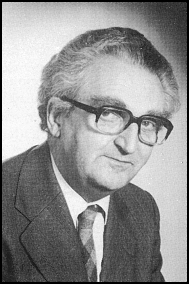
Rev. Peter T. Bisset, M.A., B.D.
Rev. Peter T. Bisset, M.A., B.D.
1953-1960
Livingstone Church was the first charge for Mr. Bisset. It was where his married life began. His children’s early days were spent at 32 High Road – which became Livingstone Manse at the beginning of his ministry. (The previous Manse then became Greystones Hotel and has since been demolished).
The preacher at Mr. Bisset’s induction service who, giving the charges, suggested to the congregation that they neither had a good nor a bad minister, but whatever he would be might depend very largely upon them! This was a blow to his pride – but a wise word! Mr. Bisset looked back warmly and remembered the gratefully the support and encouragement given. The memory of James Morrison was intertwined with the memories of that time. He was 94 when Mr. Bisset arrived in Stevenston, Session Clerk of the congregation and recently appointed Provost of the new Burgh. It was Mr. Bisset’s privilege to share in the inaugural celebrations and to have the “Kirking” of the new Council.
1953-1960 were exciting days. The “Tell Scotland” movement was bringing a new vigour to the Church’s life and its culmination in the All Scotland Crusade saw the Kirk in New Street filling up with crowded evening services. Even though evening services did not remain thronged, and even though nationally the tide during, these years seemed to be turning against the Kirk, Livingstone Church forged steadily forward with a vigour which does not appear to have declined with the passing years.
Livingstone Church made Mr. Bisset and his family part of a wider family and enabled a very young minister to go forward in the way of his calling. Ministry followed in Rutherford Church, Glasgow from 1960-1968 where he found himself meeting the needs and challenges of a city parish, until in 1968 where he was called to the High Kirk of Bathgate where for six years he found himself not only pastor to a very large congregation, but minister to a community. Beyond Bathgate Mr. Bisset looked forward to ministry in some quieter sphere – but it was not to be! In 1974 he was asked by the Home Mission Committee to take up the appointment as Warden of St. Ninian’s, Crieff. It was not an easy call to answer, nor was it an easy assignment to undertake, but God blessed the work of St. Ninian’s with a significant expansion of its training programme at Crieff and throughout Scotland.
Within the wider councils of the church Mr. Bisset was called to serve as Convenor of the General Assembly’s Committee on Moral Welfare, and Vice-Convenor of its Committee on Social Responsibility. With a special interest in Church Growth, he contributed to the Bible Society report “Prospects for Scotland”, and to a book published by MARC Europe “Ten Growing Churches”. Handsel Press in association with the British Church Growth Association then published “The Kirk and Her Scotland”.
Rev. Iain M. Roy, M.A., B.D.
1960-1997
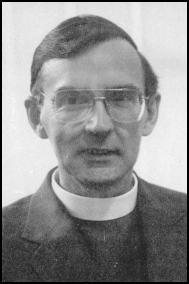
Rev. Iain M. Roy, M.A., B.D.
In 1960 when Mr. Roy came to Livingstone, there was already an active, good-attending congregation with successful organisations and a good track record in finance. There were, however, dull halls, dreadful brown lino in the choir area, and a coal-fired hall boiler giving the assiduous Joe McPhee far too much work. They could have tackled those things piece-meal. Instead, they made one big effort and created in a short space of time – two years – a brighter, more modern, and more convenient environment. It was well the congregation did this because there also emerged in the 60’s an opportunity for growth in the congregation. Many new houses were being built in Stevenston, both public and private sector. A great many new people therefore were coming to live in the community, especially from Glasgow overspill and from key-workers at Hunterston and their families being housed locally. Parish mission gave a warm invitation to them to come and many responded.
Their coming raised a problem – the more long-established members did not always know the new members. This was remedied by a series (in various years) of what were called “Getting to Know You” socials. At these, by judicious mixing, fellowship was established and much friendship initiated. At the same time, in the local community, as in many others, new and better relationships were growing between the churches. The previous two ministers had laid the foundation for that. But a particularly productive Kirk Weekend, the brain-child of the Rev. John Miller Scott – then minister of the High Kirk and then Jerusalem – furthered this process. It was from this that the Christian Aid efforts in Stevenston stemmed, a practical job of work which brought everyone closer together. Gradually, St. John’s Church joined the Church of Scotland charges in the work and from that co-operation there eventually sprang the joint services for worship – the Christian Unity Service in February, the Good Friday mediation, and the Peace Service at Hogmanay. It is, therefore, true to say that in those years there became a much better understanding between all the Churches in Stevenston. Competition became frowned upon and co-operation and mutual respect became the basic ingredients of worshipping and witnessing life. While at that point no joint worship existed between the Brethren Halls (now Townhead Christian Fellowship) and the Churches, there was joint service of the community, especially in Afton and Caley Courts and many deep personal friendships between everyone.
Every ministry has certain themes running through it. One which had been in Mr. Roy’s since the beginning, had been prayers for the sick by name. This was first initiated at the close of the evening service. When the evening service was replaced by the mid-week service, the prayers became a focal point of that worship. The practical results of that were considerable. Firstly, many individual kindnesses were done by those who prayed to those for whom they prayed. But secondly, and more importantly, there arose a recognition of the need for lay participation in the pastoral function. During periods of ministerial illness and holiday times, the work of visiting the sick carried on by lay participation. The House Group ventures were also proof of that. The material work done by volunteers in the Centenary renovation, proof yet again of the same.
During the later peroids of Mr Roy’s ministry, the community suffered from the contraction of industry and the impact of growing unemployment. It made growth of numbers difficult since so many young people had to leave Stevenston to find work. What could the Church do in such a situation? It could groan – even moan. Or it could be faithful, sensible, committed. It was more difficult to be the Church and minister in the holding situation than the expanding situation. Nevertheless, in the long run, who is to say which is the more important work? The Acts of the Apostles is often seen as the book of the New Testament which records the growth of the Church, and it does, but sometimes in the midst of that growth people are made aware of the difficult times and the holding operations without which there would have been no future, no fresh growth. To mark time is sometimes to make opportunity.
One thing blessed the ministry of Iain Roy, as all the past ministers, – the work of faithful dedicated people. In his first twenty-seven years of ministry he had one organist – Bill Archibald; three Church Officier families – the McPhees, the Humes, and the Browns; two Session Clerks – Willie Wilson and John Sanderson; three Clerks to the Deacons’ Court – John Gillan, Bob Gray, and Alex Milligan; two Treasurers – Dick Thomson and Frank Morgan. The continuity of personnel in those positions reflected the harmonious relationships which existed and are so important in the life of any congregation. In 1987, Mr. Roy wrote: “This and many other features of our life today are products of our past. We have had a good inheritance. The work of Christ is to respond in faith and love TODAY. In this way we preserve the past, justify the present, and ensure the future of a Christian community in Stevenston and Livingstone’s part within it.”
Iain Roy retired in 1997 and moved, along with his wife Barbara, to the village of Dunlop. He remains to this very day the longest serving minister of Livingstone Church – some 37 years – and is one of the most influential, well-loved and respected ministers the Church has been fortunate to have.
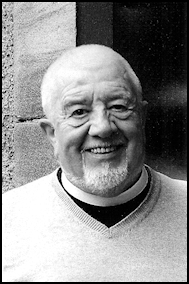
Rev. John M. M. Lafferty, B.D.
Rev. John M. M. Lafferty, B.D.
1999-2011
The Rev. John M. M. Lafferty was born in Cleland, Motherwell in Lanarkshire in 1945. Mr. Lafferty worked in insurance before becoming a mature student and answering the call to the ministry. In 1999 he was ordained and inducted as minister of Livingstone Parish Church which was his first charge. At the time of John’s induction, Livingstone Church was in a deferred linkage with Ardeer Parish Church and when the Rev. Gray Fletcher moved on from Ardeer Church, John became joint minister of both charges.
During his time in Stevenston, Mr. Lafferty formed excellent links with the other Churches, ministers and priests in the town and was instrumental in forming the Unity Services which still play a large part of the unity worship in the town’s Churches. He was also the Local British Legion Padre, a position very dear to his heart and one in which he derived a great deal of personal satisfaction. The local Masonic fraternity was another cause he held dear and conducted many services on their behalf.
Along with the Rev. Irene Bristow, John founded the steering group which later became ASFaCT (Ardeer, Stevenston Faith and Community Together) which has been of great benefit to the people of Ardeer and beyond. It was during his ministry that Mr. Lafferty guided the two Churches into the Unitary Constitution and this remains the way that Livingstone is organised today.
John Lafferty retired and moved back to Glasgow with his wife, Moira, in October 2011 after serving as minister for twelve years in Stevenston. Sadly, he had a very short retirement and passed away in May 2012 after a short illness.
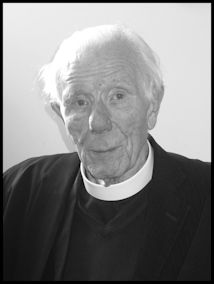
Rev. David J. Hebenton, B.D., M.A.
Rev. David Hebenton, B.D., M.A.
2003-2017 (Locum Minister)
Mr. Hebenton studied for seven years at St. Andrews University where he completed both his first degree and qualified as a minister. He was ordained as an assistant minister at Dundee Parish Church (St. Mary’s) in 1958. He then moved on to his first charge in New Stevenston, Motherwell where he spent 5 years as minister. Following on from this, Mr. Hebenton accepted a call from Springfield Church in Bishopbriggs and during his ministry here, he got the bug for teaching. After a year training at Jordanhill, Rev. Hebenton became a teacher of modern languages where he enjoyed a fifteen year career and was latterly Principal Teacher of modern languages at Barrhead High School.
However, he was destined to return to the ministry and accepted a call to a charge in Berwickshire. In fact, this was not just one charge but four charges in multiple linkages covering Ayton, Burnmouth, Houndwood and Reston Parish Churches. One can assume that this would be extremely challenging but indeed a challenge that Mr. Hebenton took in his stride. He remained here until his retirement on Easter Sunday 2002.
Mr. Hebenton and his wife retired to Seamill but retirement was to be short lived. He was asked to come to Stevenston to help the Rev. J. Lafferty as a locum assistant minister. He conducted his first service on Communion Sunday, 2nd March 2003. Following the retirement of Mr. Lafferty in 2011, Mr. Hebenton took on additional duties and has continued to cover as locum minister in both Ardeer Parish Church and Livingstone Parish Church. Both congregations were enormously grateful for both his commitment and the work he carried out during his fourteen years with us.
